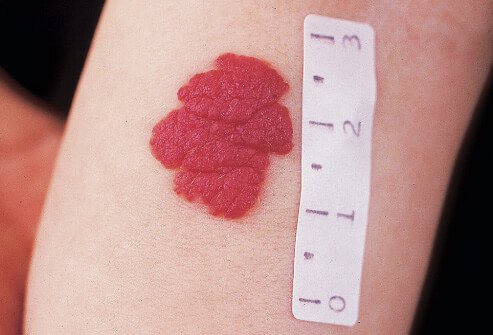
A capillary hemangioma of infancy (CHI) is a soft, bright-red to deep-purple, vascular nodule-toplaque that develops at birth or soon after birth and disappears spontaneously by the fifth year. Synonyms: Nevus or mark, angiomatous nevus.
Causes of Capillary Hemangioma of Infancy
CHI is a localized proliferation of angioblastic mesenchyme.
Symptoms of Capillary Hemangioma of Infancy
Capillary hemangiomas are typically found at birth. They will grow during the first decade and most will shrink (involutes). If they involve the eyelids, they can cover the eye and cause loss of vision (amblyopia). It is very important that children with capillary hemangiomas be seen by a pediatric ophthalmologist and eye cancer specialist as soon as it is found.
- Small red vascular lump that bleeds easily
- Often occurs at site of recent trauma
- Seen most frequently on hands, arms, and face
Diagnosis
Made on clinical findings and MRI.
Treatment
Each lesion must be judged individually regarding the decision to treat or not to treat and the selection of a treatment mode. Surgical and medical interventions include continuous wave or pulsed dye laser, cryosurgery, and systemic glucocorticoids. When possible, treatment should be avoided because spontaneous resolution gives the best cosmetic results.
References